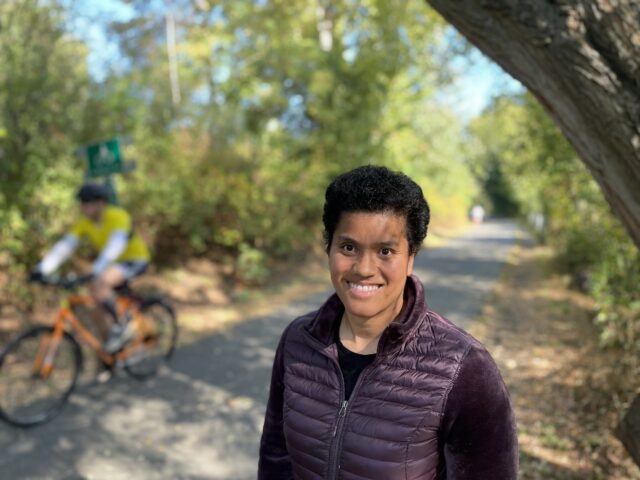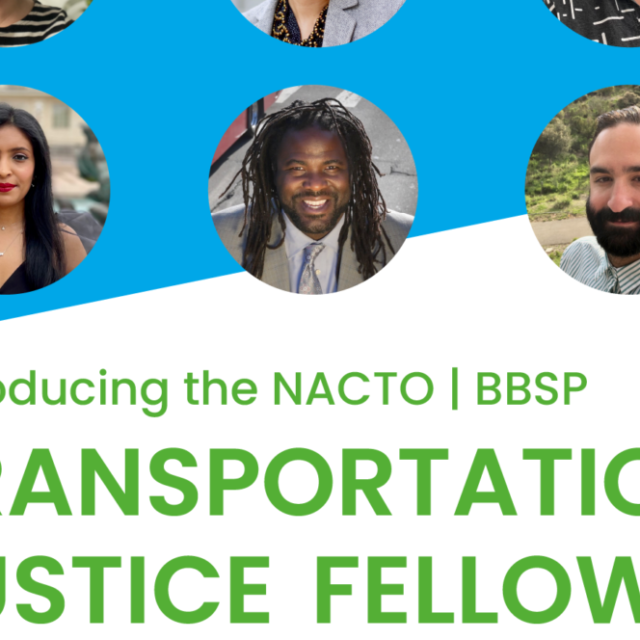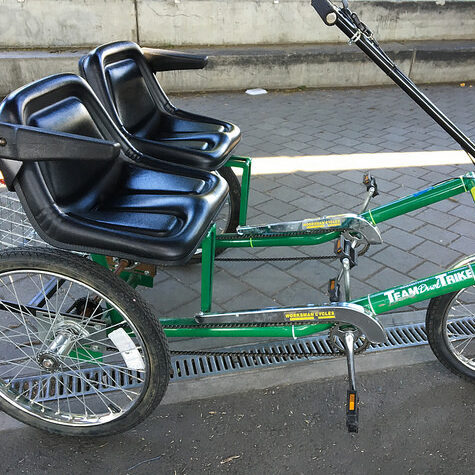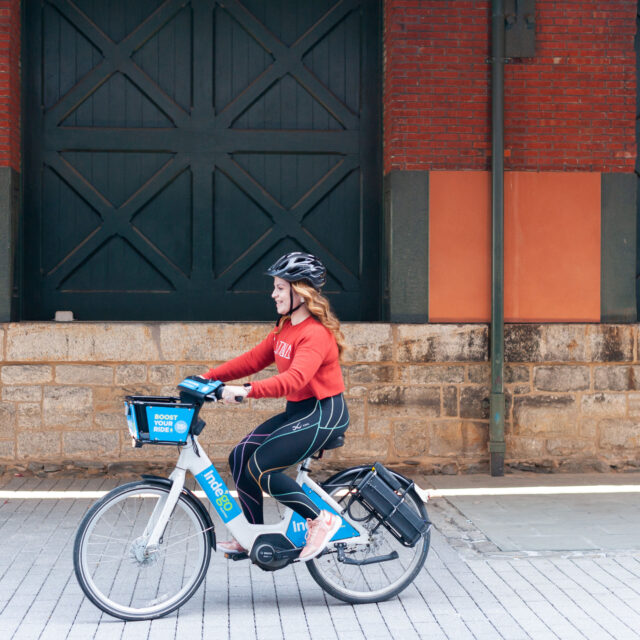Planning’s Disability Blindspot
by Kiana Parker, Transportation Justice Fellow
October 4, 2021
All cities should strive to serve everyone, people with disabilities included. Unfortunately, the latter is all too often left out of the planning process.

The author, Kiana Parker, is a disability advocate living in Seattle, Washington. (Photo credit Christine Chu)
If you have ever been to Seattle, chances are you’ve likely visited one or more of its hallmarks: the Space Needle, the original Starbucks in Pike Place Market, the Museum of Flight. All of these attractions are worth seeing. If it’s bikes you’re into though, you’ve probably spent some time on the city’s Burke-Gilman Trail testing your endurance.
This trail stretches about 20 miles from Shilshole Bay, in Seattle, to the City of Bothell. One of the reasons why it’s so popular is because it is both paved and off-road, so bikes and cars don’t have to share space except for at trail crossings that intersect with major streets.
When I first moved to the city 20 years ago, the trail was a place I could enjoy walking. As a person with a disability, I liked it because I didn’t have to worry about the presence of curbs, the trail never felt too crowded and a canopy of trees coupled with a gentle breeze often kept me cool as I got in my steps.
All of that has changed and I seldom use the Burke-Gilman Trail anymore. What makes this trail so challenging to enjoy now is that Seattle’s population has grown significantly. The trail was never meant to support the number of people who currently use it. For a trail that permits traffic in both directions, it is far too narrow in many places to navigate safely even if you aren’t disabled.
Before I decided to all but throw in the towel, I tried my best to be accommodating, acknowledging that this was a shared space and that I moved slower than most other people. I’d stay as far to the right as I possibly could without falling into the bushes or I’d strategically time my visits to avoid as many bicyclists as possible. Even with those concessions, it’s begun to feel like far more trouble than it’s worth.
The trail is touted as a space for everyone to enjoy but bicyclists often prevent people who are not on bikes from feeling safe, frequently exceeding speeds that are appropriate for a space shared with pedestrians. There is nothing magical about saying, “On your left” as you whiz by as though you are competing in the Tour de France. Those three words don’t absolve anyone from their responsibility to use common sense. Each time a bicyclist says that to me, I just respond with a snarky, “On your right.” If bicyclists actually want their warning to be helpful, it needs to be said earlier so that people can safely react to it.
I fare slightly better on sidewalks (if they exist at all), but it’s hard to feel safe there too. After all, in Seattle, bicyclists are allowed to ride on the sidewalks. Seattle doesn’t have enough bike lane infrastructure so rather than compete with cars, bicyclists sometimes feel safer riding on the sidewalk. I get it! The part that I don’t get is the expectation that I’m the one who is supposed to move even though it’s far easier for a bicyclist to adjust than it is for a disabled or elderly person. Much of this comes down to etiquette and education — I know bicyclists can do better.
Miami Valley Trails has a guide to trail safety and etiquette that is helpful for trail users of all types. Guides like this one are important educational tools that need greater publicity. They can help create a safer experience for everyone, especially when space is limited and must be shared with many different transportation modes.
Despite my personal frustrations, I strongly believe in two things:
- Bikes and people with disabilities can equitably and safely coexist, and
- If we are going to have any chance of meaningfully reducing our carbon footprint, bikes must be part of the solution in creating a more sustainable transportation future.
However, these goals cannot be achieved if people with disabilities are not active and equal players in the planning process. That applies not only to how bikes and bike sharing programs are integrated into our transportation network but also to thoughtful street design and investment. This means that individuals with disabilities cannot be relegated to community advisory groups or modal boards. They must also be hired as transportation planners as well as policymakers and work in collaboration with those responsible for implementation.
It seems like wanting people with disabilities in these roles is a no-brainer, but in reality, the barriers to holding these kinds of positions within most transportation agencies are high and made more difficult by the expectation that you possess a driver’s license. I recently applied for a position with the City of Seattle and was surprised that it included a question that solicited my driver’s license number.
Thankfully, I have a driver’s license but it’s important to recognize that many people with disabilities do not. Regardless of whether the question is required or optional, it doesn’t send an inclusive message to prospective applicants with varying abilities. Inflexible work schedules, requiring in-person work and work cultures that frown upon the concept of rest in the workplace likewise contribute to the idea that people with disabilities need not apply.
Hiring and retaining individuals with disabilities not only leads to more spaces that center universal design principles but results in equity wins that extend far beyond transportation outcomes. Employment is more than just a means to a paycheck. For those with disabilities, working within local, state and federal transportation agencies often means higher wages and more affordable, higher quality health care; it means access to a retirement plan and to expanded mental health services.
Transportation is in a moment of unprecedented challenges only made worse by the pandemic. Financial constraints, the urgency of climate action and a need for greater equity and inclusion contribute to a puzzle that already has so many moving parts. I choose to remain engaged because the stakes feel higher than ever. I believe that change is driven by a commitment to inclusion that doesn’t just apply to external community engagement efforts. Lasting change is fostered from within a workforce.
I currently work as a consultant partnering with various transit agencies in the Puget Sound region to find solutions to some of its most complex issues. These include the integration of different modes in shared spaces that pedestrians, bicyclists, scooters and cars can use safely, or the best way to provide more timely options for how older adults and individuals with disabilities connect to transit. I am also utilizing my time in the Transportation Justice Fellowship to create a framework for how The City of Seattle will center racial equity in planning for areas with high-capacity transit.
The City of Seattle is right to strive for and cultivate a staff that reflects the diversity of the people it serves. All cities should. This must include individuals with disabilities. When individuals with disabilities are left out of decision making, this critical perspective is missed, resulting in mistakes that are repeated and inaccessible experiences that continue to feel dangerous. For far too long, we have been largely absent from transportation workforces — equity means addressing that disparity.
The Better Bike Share Partnership is funded by The JPB Foundation as a collaboration between the City of Philadelphia, the National Association of City Transportation Officials (NACTO) and the PeopleForBikes Foundation to build equitable and replicable bike share systems. Follow us on Facebook, Twitter and Instagram or sign up for our weekly newsletter. Got a question or a story idea? Email kiran@peopleforbikes.org.



